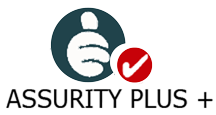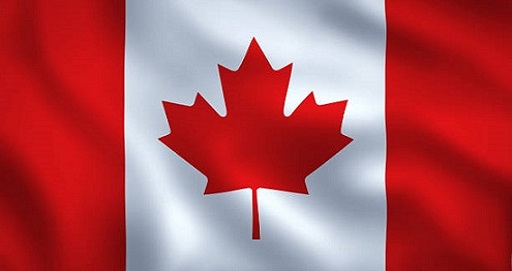- Your cart is empty
- Continue Shopping
N95 Masks – Know the Basics


The Centers for Disease Control and Prevention (CDC, 2022) recently clarified their guidance on the use of masks and respirators stating, “while any mask is better than wearing no mask at all, a well-fitted National Institute for Occupational Safety and Health (NIOSH)-approved respirator provides the most protection.” The CDC recommends that individuals continue to wear the most protective mask that fits properly and that will be worn consistently. To help prevent the spread of COVID-19, the U.S. government will deliver 400 million free non-surgical N95 masks to thousands of pharmacies, community centers and other locations across the country next week. As N95 respirators become more widely available, and are no longer limited to health care settings, I wanted review some basic information about these masks.
What are N95 respirator masks?
N95 masks, a type of personal protective equipment (PPE), are one of the most common particulate filtering facepiece respirators (FFR) that filter small (>0.3 micron) airborne particles such as bacteria and viruses with at least 95% efficacy. These devices are designed to form a very close fit around the nose and mouth and can provide a higher level of protection than cloth or procedural masks when worn appropriately. The respirator should fit snugly against the user’s face and there shouldn’t be any gaps between the skin and the respirator seal. In health care settings, staff that are required to use FFRs should undergo annual fit testing to determine the most appropriate mask size, medical clearance, and proper training including donning, doffing and appropriate handling and disposal (D’Alessandro & Cichowicz, 2020). A user seal check should be performed each time the respirator is used.
What’s the difference between a surgical mask and an N95 respirator?
A surgical mask is a loose-fitting, disposable barrier that protects the wearer from large-particle droplets, splashes, sprays, or splatter that may contain viruses and bacteria in the immediate environment. Surgical masks do not provide complete protection due to a loose fit and may not filter very small particles that can be spread by coughing, sneezing, or aerosol-generating medical procedures. These masks aren’t considered respiratory protection.


When should N95 respirators be used?
For health care providers, an N95 respirator should be worn when caring for someone with COVID-19, during aerosol-generating procedures in patients with suspected or confirmed seasonal influenza, and when caring for patients with confirmed infectious diseases requiring airborne precautions (such as measles or tuberculosis). Individuals who work in construction or other industrial jobs that expose them to dust and small particles also use N95 masks to protect themselves from illness and injury.
For the general public, a non-surgical N95 respirator should be worn (CDC, 2022):
- By individuals at increased risk for severe illness such as those who are immunocompromised, older adults, and those with certain underlying medical conditions
- When working in areas where you are exposed to large numbers of people (i.e., grocery store workers)
- When traveling by airplane, bus, train, or other forms of public transportation
- If physical distancing is not possible such as crowded indoor or outdoor settings
- If you are not up to date on your COVID-19 vaccinations
When shouldn’t N95 respirators be used?
Do not wear a NIOSH-approved respirator mask if it is hard to breath while wearing one or if it becomes wet or dirty. Also, do not use N95 respirators with other masks or respirators.
How can you recognize an authentic N95 respirator?
According to NIOSH, individual filtering facepiece respirators are required to have the following markings (CDC, 2021):
- Name of manufacturer, a registered trademark, or abbreviation of the business name as recognized by NIOSH.
- NIOSH in block letters or the NIOSH logo.
- NIOSH Testing and Certification approval number, e.g., TC-84A-XXXX.
- NIOSH filter series and filter efficiency level, e.g., N95, N99, N100, R95, P95, P99, P100.
- Model number or part number: The approval holder’s respirator model number or part number, represented by a series of numbers or alphanumeric markings, e.g., 8577 or 8577A.
NIOSH recommends the lot number and/or date of manufacture also be included, however, this is not required. See the NIOSH website for a complete list of NIOSH-approved N95 respirators by manufacturer.
KN95 masks are certified in China and KF94 masks are certified in South Korea. These masks are designed to provide the same protection as N95 masks, however, many counterfeit versions have appeared on the market. The CDC (2022) reported that approximately 60% of KN95 respirators evaluated by the NIOSH in 2020 and 2021 did not meet quality assurance standards. Please note the surgical N95 is recommended for use in healthcare settings.
General N95 Respirator Precautions (FDA, 2021):
- People with chronic respiratory, cardiac, or other medical conditions that cause breathing difficulties should check with their health care provider before using an N95 respirator as N95 respirators can make breathing more difficult.
- All FDA-cleared N95 respirators are labeled as “single-use,” disposable devices. If your respirator is damaged or soiled, or if breathing becomes difficult, you should remove the respirator, discard it properly, and replace it with a new one.
- N95 respirators are not designed for children or people with facial hair because a proper fit cannot be achieved and therefore may not provide full protection.
As always, be sure to follow your institution’s policy for personal protective equipment and the use of FFRs and N95 respirators.








